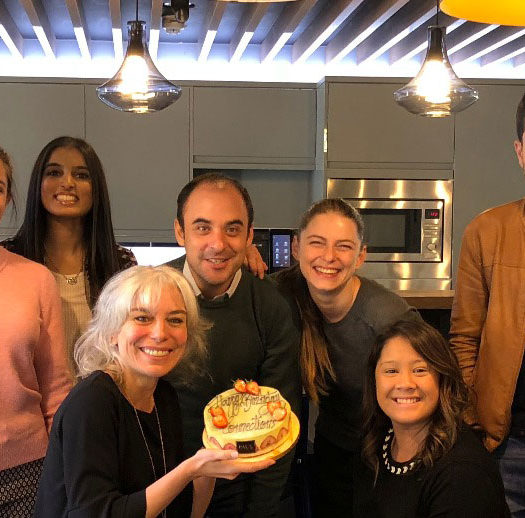Improving meeting design
At the inaugural Connections Meetings event at the Hilton Conrad Algarve, meetings organisers and industry suppliers from across Europe participated in an interactive session about improving meeting design. The discussion was led by conference moderator Mike van der Vijver, founder of the MindMeeting consultancy and himself a meeting designer. Delegates split into groups to come up with meetings’ challenges taken from their experience. The objective of the exercise was for Mike to help attendees improve their meeting programmes.
Initial topics included dealing with rowdy meetings delegates, problematic senior executives and unexpected occurrences. However, these examples were less to do with exemplary planning or design, and more to do with the need for effective contingency. Good planning mitigates the risk of having the wrong people in a room, but it doesn’t necessarily help prepare for the unexpected. What’s important in these circumstances is that participant engagement and wellbeing remain at the core of the response. People appreciate transparency, but avoid adopting default positions: an original and proactive reaction will keep a meeting on track to succeed.
Lessons:
If circumstances change unexpectedly, don’t automatically assume a default position
Be transparent about contingency plans
Preparing presenters
However, one concern shared by many delegates is that of boring, ineffective speakers. “I hate it when a speaker reads verbatim from a prepared speech along with boring PowerPoint slides,” explained one participant. Van der Vijver replied this was a classic case of when design intervention was necessary. If a meeting is going to involve a poor speaker the impact must be mitigated in advance. “You have to ask what is the most effective way for this person to deliver their content,” he said. “Look for an alternative; don’t ask the person to do something they’re not capable of, but you can suggest something to them just a little outside their comfort zone. For example, a monotonic speaker could be filmed in advance and his content edited to maximise effect; then a live audience Q&A could follow in the room.” This is one of many examples. Understanding the content in advance is, therefore, the only way for the most suitable presentation vehicle to be found. Focus on how the content will be framed, and how delegates will engage with it.
Lesson:
Propose a compelling alternative to monologue speakers
Going above and beyond
Perhaps one of the most interesting questions raised in the session was about how an established and successful meeting framework can be improved upon. One participant shared the example of a long-standing event that is regularly sold out, even though its format had not changed in some time. Another described a recent meeting held in the north of England between tour operators and suppliers. The meeting organisers provided delegates with everything asked for in advance, which was, for the most part, traditional plenary presentations plus speed-dating session. It received very positive feedback.
While Van der Vijver lauded the organisers for hosting successful events, he said there were opportunities for improvement in both instances. A meeting designer, for example, would instantly recognise that the event in the north of England was not experiential for participants. “People don’t remember without emotion,” he explained. “Any activity undertaken by an individual with other people involves some kind of emotion, which strengthens the circuits in the brain responsible for memorising. Stimulating people’s emotions is therefore crucial,” he said. “The fact that people were satisfied at the end of the meeting doesn’t necessarily mean they obtained maximum effectiveness.”
However, meeting organisers are advised against resting on their laurels, and encouraged not to adopt default position just because they appear to be tried and tested. By using a tried-and-tested meeting design methodology one will almost always be able to identify aspects to develop. “Meeting organisers should not be afraid of change or taking a risk,” said Van der Vijver. “By going through the methodology meticulously you will find areas to improve. You have to ask yourself what experience you want delegates to have, and how the content can be shaped and framed to deliver that experience.”
Lesson:
A well-structured design methodology can improve good meetings further
Truly authentic real experiences
In the contemporary global business environment, it is not usual to have delegates from four different generations in one room. How, therefore, can a meeting organiser tailor the experience to suit everyone? Many approaches can be taken; however, there is a misunderstanding that the Millennial generation (and those beyond) has an obsession with technology. This is misguided, says van der Vijver. A study, conducted by the German research organisation, the Fraunhofer Institute, identified what younger generations want in meetings. To the surprise of some, they don’t ask for technology. “For them technology is normal. Sure, they want smartphones and apps to communicate and share with their communities. But what is it they are sharing? In a word: experiences. People want to share emotion. We are now in the experience economy. Young people do not want to sit in a room for three hours listening to some know-it-all,” he said. Then again, neither do older generations. People want authentic experiences.
Lessons:
Emotions create memories
Create and share experiences
Van der Vijver cited a personal example: some years ago he worked the Dutch Ministry of Health in a meeting about healthcare for the elderly. The objective was to produce a list of priorities in relation to government healthcare priorities. “At one point in the meeting, we invited a quartet of musicians to perform for delegates. Each person was at least 75 years old. Next to the stands holding the scores was a pile of all the medication each musician was taking. It created a very real connection between the delegates and the content. It provided a real-life framework for discussion.”
Van der Vijver calls this the heart and soul of a meeting. By taking a holistic approach to the meeting or event, the organiser is able to connect with each delegate on a deeper level, which in turn allows them to enjoy a more valuable emotional connection with each other.
Lesson:
Connect emotions with content and the meeting’s outcomes




